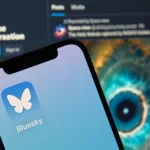As concerns over screen addiction among children and young adults continue to grow, researchers have found that allowing students to use smartphones for a very brief time during class can enhance their performance and reduce distractions. A new study led by a team of US researchers suggests that just one minute of phone use during class can significantly improve test scores and reduce phone dependency.
The study, conducted by Professor Ryan Redner and his team at Southern Illinois University, focused on the effects of “technology breaks” in college classrooms. Their findings, published in the journal Frontiers in Education, revealed that short, controlled breaks for phone use helped students manage their phone habits and boosted academic performance.
“We show that technology breaks may be helpful for reducing cell phone use in the college classroom,” said Redner, the study’s lead author. “To our knowledge, this is the first evaluation of technology breaks in a college classroom.”
The Experiment
The researchers carried out a term-long experiment involving college students. The study evaluated the impact of technology breaks of one, two, or four minutes, with a focus on how these breaks affected students’ phone use and academic performance. Notably, during these breaks, students were not allowed to use their phones but were encouraged to ask questions and engage with the class.
However, the one-minute technology break stood out. During sessions where this break was implemented, students achieved higher test scores, with over 80% of students consistently performing well. The research suggests that students were less distracted during lectures and more focused, leading to better academic results.
Reducing Phone Use in Classrooms
Phones have long been a source of distraction in classrooms, with students often using them for non-academic purposes up to 10 times a day. While most classrooms prohibit phone use, the study indicates that brief, scheduled breaks might reduce the urge to check phones during class.
Interestingly, the results showed that during one-minute technology breaks, phone use was at its lowest. Longer breaks, such as those lasting two or four minutes, led to more frequent phone use.
“One possibility is that one minute is enough to read and send a smaller number of messages. If they have more time to send many messages, they may be more likely to receive messages and respond again during class,” explained Redner.
A Solution for Screen Addiction?
With the increasing concern over screen addiction among children and young adults, this study offers an intriguing solution for educators. By allowing brief phone breaks, teachers may help students balance their need for connection with their focus on learning. The findings highlight the potential for technology breaks to reduce phone dependency and enhance classroom performance, providing a middle ground between strict phone bans and unrestricted use.
The study’s authors hope that this approach will help improve the learning environment and make students more engaged and less distracted in class.











